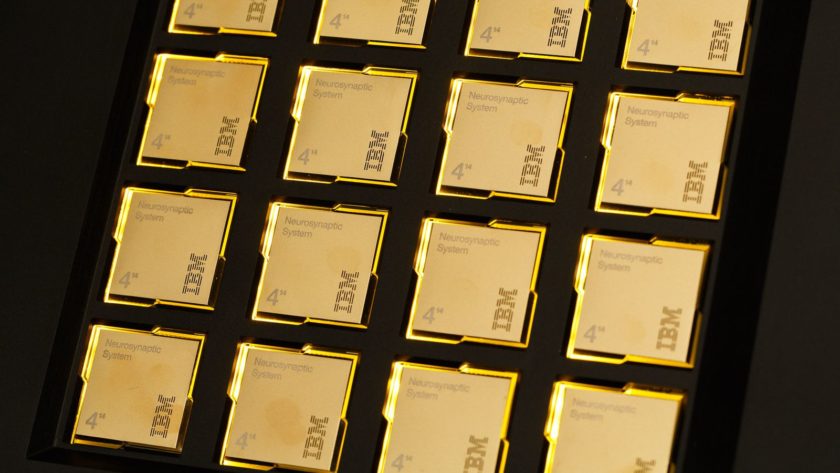
IBM and the US Air Force are working together to optimise its TrueNorth chips for machine learning models at the hardware level.
The chips are designed to operate with low power consumption and to be optimised for machine learning models that operate at the hardware level, but the technology is still very much in the early stages of development.
Read more: IBM supercomputers to take local weather prediction global
The 64-chip array will be made up of four boards with 16 chips on each board and IBM thinks that they could find themselves being used in smartphones or in self-driving cars, or satellites and unmanned aerial vehicles, which is partly why the US Air Force is interested. 
The chips are said to be capable of running a single neural net on multiple data sets or running multiple neural nets on a single data set, according to Tech Crunch.
The Air Force’s involvement stems from the TrueNorth project originating as a DARPA SyNAPSE project in 2008. DARPA is the Defense Advanced Research Projects Agency and the SyNAPSE program aims to develop electronic neuromorphic machine technology that scales to the biological level.
Read more: Finastra, IBM to drive digital banking with cloud, Watson and blockchain
The program’s had success since its inception, with the number of neurons per system increased from 256 to 64 million.
Although the program has made advancements, there are doubts as to whether it has substantial enough advantages over conventional chips such as FPGAs and GPUs.


